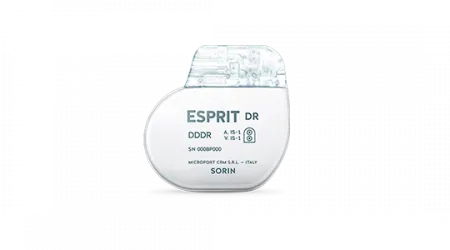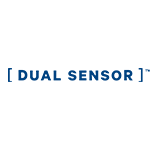ALIZEA
Connected, yet free
Maintain excellent clinical follow-ups-remotely. Excellent longevity* in remote mode reduces the need for replacements5. Efficiently manage AF while improving clinical outcomes.
Features
- 13 years longevity with remote monitoring and full feature set ON*
- LBBAP – Able to provide Left Bundle Branch Area Pacing ensuring physiological pacing6
- SafeR™ – Minimize ventricular pacing for SND and AVB patients3,4
- World’s first MR conditional mixed system7** – Expand MRI accessibility while maintaining the highest standards of safety, flexibility, and innovation
- AUTOMRI™ – Making MRI scans easy and safe for pacemaker patients
- Dual Sensor – Designed to physiologically modulate heart rhythm by combining accelerometer and minute ventilation sensors
- Sleep Apnea Monitoring** – Screen and Monitor for Sleep Apnea
- Bluetooth® Remote monitoring - Offer advanced patient monitoring and follow-up, providing timely alerts and detailed reports of your patient
*13 years with SafeR™ mode, assuming 5% V pacing and 50% A pacing, 60 min-1, 2.5 V, 0.35 ms, 750 Ohms, Holter ON, sensors ON, Remote ON
**Not available in the USA
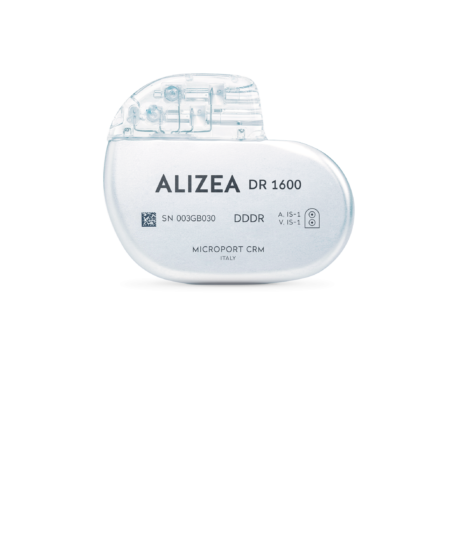
BOREA
Connected to life’s every beat
Promote physiological pathways. The smart way to drive efficiency – remotely. Programming set-up and follow-up made easy. Connected algorithms designed to work together for improved clinical outcomes.
Features
- LBBAP – Able to provide Left Bundle Branch Area Pacing ensuring physiological pacing6
- SafeR™ – Minimize ventricular pacing for SND and AVB patients3,4
- World’s first MR conditional mixed system7 – Expand MRI accessibility while maintaining the highest standards of safety, flexibility, and innovation
- AutoMRI™ – Making MRI scans easy and safe for pacemaker patients
- Bluetooth® Remote monitoring – Mean efficient access to patient data that keeps the patient out of hospital
- Dual Sensor – Designed to physiologically modulate heart rhythm by combining accelerometer and minute ventilation sensors
This product is not available for sale or distribution in the USA. For further information on product availability, please contact your local representative.
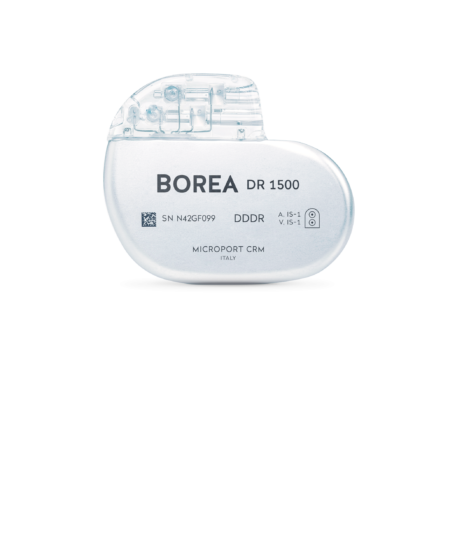
ENO
One with heart
World’s smallest transvenous pacemaker.1 1.5 T and 3 T full body MR conditional. Empower AF Risk Management.
Features
- SafeR™* – Minimize ventricular pacing for SND and AVB patients.3,4
- Sleep Apnea Monitoring™ – Screen and Monitor for Sleep Apnea.
- AutoMRI™ – Making MRI scans easy and safe for pacemaker patients.2
- Dual Sensor™ – Designed to physiologically modulate heart rhythm by combining accelerometer and minute ventilation sensors.
This product is not available for sale or distribution in the USA. For further information on product availability, please contact your local representative.
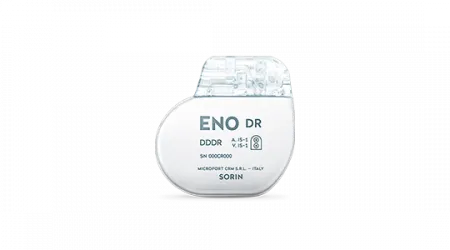
TEO
Break free
World’s smallest transvenous pacemaker.1 1.5 T and 3 T full body MR conditional. Therapies activated automatically at implant.
Features
- 12 years of longevity* in 8 cc.
- AutoMRI™ – Making MRI scans easy and safe for pacemaker patients.2
- SafeR™ – Minimize ventricular pacing for SND and AV Block patients.3,4
- Dual Sensor™ – Designed to physiologically modulate heart rhythm by combining Accelerometer and Minute Ventilation sensors.
*SafeR Mode (5% V pacing, 50% A pacing), 60 min-1, 2.5 V, 0.4 ms, 750 Ω, SENSORS ON, EGMs ON.
This product is not available for sale or distribution in the USA. For further information on product availability, please contact your local representative.

OTO
Sense in every cc
World’s smallest transvenous pacemaker.1 1.5 T and 3 T full body MR conditional. Fast and Easy follow-up at a click of a button.
Features
- 11.7 years longevity* in 8 cc.
- AutoMRI™ – Making MRI scans easy and safe for pacemaker patients.
- AutoImplant Detect – Automatically activates algorithms at implant.
*DDDR Mode (50% A & V pacing), 60 min-1, 2.5 V, 0.4 ms, 750 Ω, SENSOR ON, EGMs ON, DIAGNOSTICS ON.
This product is not available for sale or distribution in the USA. For further information on product availability, please contact your local representative.
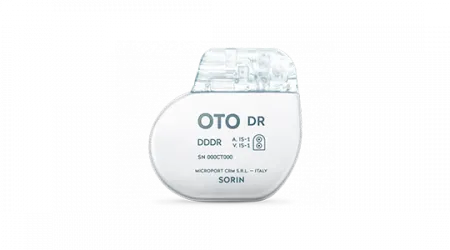
KORA 250
Minimum Size. Maximum Outcome.
Kora 250 is designed to improve patient outcome while driving efficiency in practice.
Features
- AutoMRI™ – Making MRI scans easy and safe for pacemaker patients.
- SafeR™ – Designed to promote intrinsic conduction in patients who need dual-chamber pacing.
- Sleep Apnea Monitoring™ – measures respiration pauses and reduction in respiration.
- Dual sensor™ – combines an accelerometer and a minute ventilation sensor to provide rate response closest to sinus rhythm.
This product is not available for sale or distribution in the USA. For further information on product availability, please contact your local representative.

KORA 100
Always one step ahead
Kora 100 provides the first MRI mode that automatically detects an MRI magnetic field – another innovative solution in a pacing system known for its small size, longevity, and high performance.
Features
- AutoMRI™ – Making MRI scans easy and safe for pacemaker patients.
- SafeR™ – Designed to promote intrinsic conduction in patients who need dual-chamber pacing.
- Sleep Apnea Monitoring™ – Measures respiration pauses and reduction in respiration.
- Dual sensor™ – Combines an accelerometer and a minute ventilation sensor to provide rate response closest to sinus rhythm.
This product is not available for sale or distribution in the USA. For further information on product availability, please contact your local representative.

Reply 200
Extending the boundaries in cardiovascular disease management.
Reply 200 automatically screens patients at risk of severe sleep apnea, featuring a suite of algorithms designed to prevent serious cardiovascular comorbidities.
Features
- 12 years longevity* in only 8 cc.
- SafeR™ – Dramatically reduces unnecessary RV pacing in all pacemaker patients, including AV block patients.3,4
- Sleep Apnea Monitoring™ – Measures respiration pauses and reduction in respiration.
- Dual Sensor™ – Designed to physiologically modulate heart rhythm by combining accelerometer and minute ventilation sensors.
*SafeR Mode (5% V pacing, 50% A pacing), 60 min-1, 2.5 V, 0.4 ms, 750 Ω, SENSORS ON, EGMs ON.
This product is not available for sale or distribution in the USA. For further information on product availability, please contact your local representative.
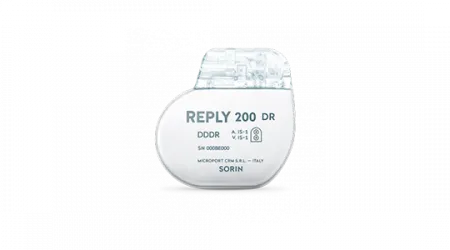
Reply
Natural intelligence
A pacemaker family inspired by nature.
Features
- SafeR™ – AV Management proven to be safe and effective for all patients with bradyarrhythmia.2,3
- 12 years longevity* in only 8 cc. The world’s smallest dual-chamber pacemaker with no compromise on longevity.1
- Dual sensor™ – Combines an accelerometer and a minute ventilation sensor to provide rate response closest to sinus rhythm.
*SafeR Mode (5% V pacing, 50% A pacing), 60 min-1, 2.5 V, 0.4 ms, 750 Ω, SENSORS ON, EGMs ON.
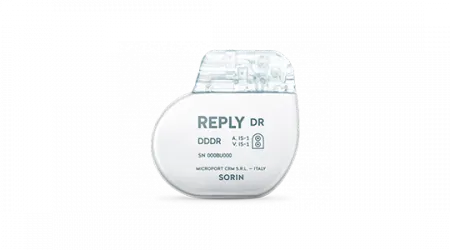
Esprit
Makes your life easier
The ESPRIT family of pacemakers features a host of dedicated algorithms designed for patient safety as well as Dplus pacing mode which significantly reduces ventricular pacing.
Features
- Dplus – Automatic AV hysteresis.
- Lead impedance trend, A&V Autosensing, V Auto threshold.
- SmartCheck – Automate follow-up tests at the click of a button.
